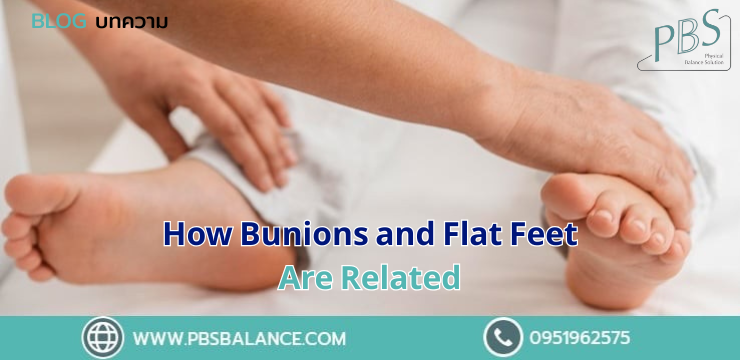
Many people are familiar with flat feet (pes planus), but fewer realize that another foot condition—bunions (hallux valgus)—often occurs alongside them. Although one does not directly cause the other, these conditions frequently share underlying biomechanical factors that link them together.
What Is a Bunion?
A bunion (hallux valgus) is a bony protrusion at the base of the big toe, where the first metatarsal bone shifts outward and the big toe deviates inward toward the second toe. This causes the joint at the base of the big toe to become prominent and misaligned, sometimes accompanied by inflammation or discomfort.
This deformity develops gradually due to abnormal pressure and motion across the foot, and it can affect the shape and mechanics of the entire foot.
How Are Bunions and Flat Feet Related?
While bunions and flat feet are distinct conditions, they often coexist. This is not because one causes the other, but because they share several biomechanical characteristics, such as:
- Foot structure or ligamentous laxity
- Overpronation (excessive inward rolling of the foot during walking)
- Instability of the first ray (the joint and arch under the big toe)
These traits can predispose someone to develop both conditions over time. For example, people with flat feet often overpronate, which may shift pressure to the inner forefoot—where bunions typically form.
How Are These Conditions Diagnosed?
Both conditions can be identified through:
- Visual examination of foot shape and alignment
- Gait analysis to assess how the weight is distributed when walking
- X-rays, which can reveal bone angles and deformities
If you have bunions, it’s wise to check for signs of flat feet, and vice versa, to determine whether both need to be addressed together.
Causes of Bunions
Bunions can develop due to a combination of factors:
- Genetics: Family history of bunions or foot deformities
- Foot structure: Flat arches, joint hypermobility, or abnormal bone alignment
- Improper footwear: Tight shoes, high heels, or narrow toe boxes
Prolonged stress on the foot over time, especially from standing or walking
Managing and Preventing Foot Problems
If you have bunions and suspect flat feet, a podiatric evaluation is essential. Personalized orthotic insoles can help realign the foot and reduce strain on joints. At PBS, we offer custom orthotic solutions based on clinical assessments and gait analysis to support the foot’s structure and function.
If you continue to experience persistent foot pain despite trying all natural treatment methods, consult a specialist promptly. At PBS, our team of foot care specialists provides services including custom orthotic insoles for plantar fasciitis and corrective devices for foot alignment. These solutions are personalized to treat the root cause and deliver the best possible outcomes.
Facebook: PBSofficial.TH
Line Official: @pbs.official
Source: